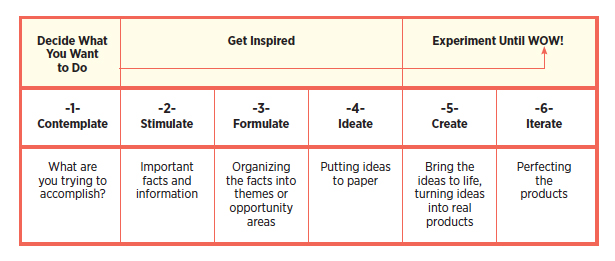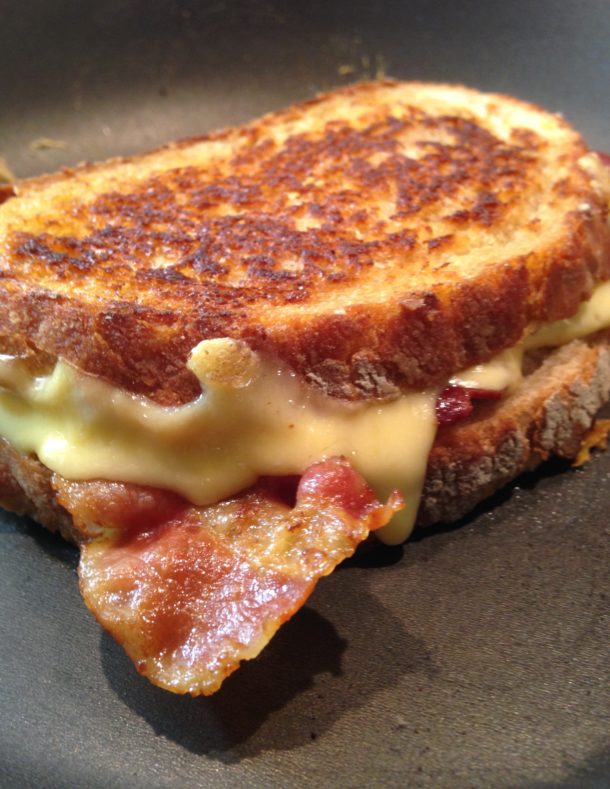Welcome back to the Be A Kitchen Innovator blog series on The Knickerbocker Glory! This is the sixth post in the series that will discuss Iteration. I hope you find it useful.
Iteration – Tweak, Re-Do, Perfect
In the first, second, third, fourth and fifth posts of this series we talked about…
- Writing our statement of purpose and giving it a twist making sure that we were being clear about what we want to accomplish.
- The importance of finding new facts to inspire us.
- Creating themes and opportunity areas – the mis en place of innovation – where we organise our facts to tell a story.
- Generating ideas, using an idea sheet and getting those ideas on paper to create a roadmap for what will later be brought to life.
- Getting those ideas off paper and making them real so they can be experienced first hand.
As we bring ideas into reality, they will need some perfecting. It may take many rounds of tweaking before we have it just right. It is in the iteration step where the product is tinkered with, reworked and made even better. During iteration, while being true to the original idea, we can tweak, twist, stack, cluster, jumble, reorder, remix, and redo all to experience which changes serve our creation best.
Make the Dish, Serve it to People, See What They Think, Make the Dish Again, REPEAT!
It is also one of the best times to get the opinions of others. This feedback will help give you a better idea of how close you are to achieving your goal. It is best to insert heavy doses of feedback here to understand what tweaks are worthwhile and which are not. Some ideas may even fall by the wayside during iteration as they may not live up to the desired criteria. While this may not seem good, it is! During iteration we should strive to fail fast. Once we know it does not work, take the learnings, move on and don’t look back. The faster we fail, the faster we can find the right track to be on. The faster we find the right track to be on, the faster we get to the big WOW moments! When we consider iteration in the context of cooking it is straight forward – make the dish, serve it to people, see what they think, make the dish again, repeat!
It can be important to use a defined set of criteria after ideation so time and resources are spent creating only those ideas that are thought to have the best potential. This is not to say that they were not worth exploring. Each new idea explored is worthwhile because it has taught us something new. Of course, having criteria chosen before starting the process is best as it helps make sure that goals are clear up front and makes it easy to recognize when those goals have been achieved. The criteria used can be anything ranging from cost to cultural fit or anything in between. It is best to make it as objective as possible as this will help with decision making later on.
Iteration is the final step in the innovation process, but the process of innovation should never really stop! New ideas and new innovations are the most valuable currency in the world today. Being able to create them as needed is the difference between the successful and unsuccessful. As Gary Hamel said
“Out there in some garage is an entrepreneur who’s forging a bullet with your company’s name on it. You’ve got one option now – to shoot first. You’ve got to out innovate the innovators.”
Lets review the innovation steps we have learned in the series.
Remember, state what you want to do, find new inspiration, create themes, make new connections to create great ideas, bring those ideas to life and then perfect them! Innovation at its core is bringing new ideas to life and with these steps you are sure to out innovate the innovators. You can review the series here…
Stating Your Purpose
Finding Inspiration”
Creating Themes
Generating New Ideas
Bringing Ideas to Life!
I hope you found the series helpful. For further reading on the topic check out the book Knickerbocker Glory: A Chef’s Guide to Innovation in the Kitchen and Beyond.
Keep Innovating!
Do you have any questions about Iteration? Have you used an innovation process like this before in your kitchen or work? Let us know in the comments or on Facebook.
The Culinary Exchange can be found on Facebook, Twitter, Instagram, Pinterest, Google+ and YouTube.
Come on! Follow Along!





